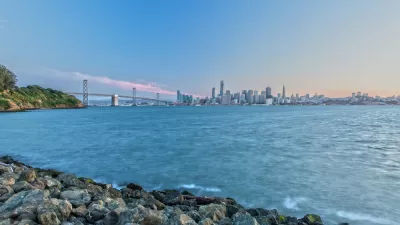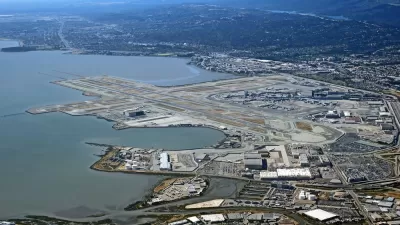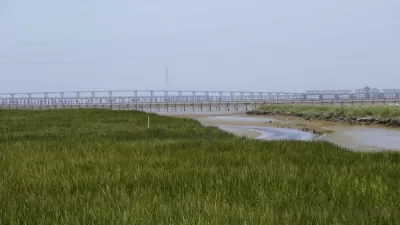The San Francisco Bay is usually an undesirable place to swim, except for a hearty few. A development proposal seeking assistance at the state level would add a pool to the Bay’s waters to make the idea of going for a swim more appealing.

A bill under consideration by the California State Legislature would authorize construction of a heated, Olympic-sized pool in the San Francisco Bay.
In an article for the Mercury News, Marissa Kendall reports that the bill is necessary because the state owns the proposed site of the pool—Piers 30-32.
The project would replace two connected, dilapidated piers currently used as parking. One pier would be rebuilt and converted into 375,000 square feet of offices and 45,000 square feet of retail space. The other would become the pool, which would float on a barge, and would include space for lap swimming, water polo games and lounging in a hot tub. A section of the Bay surrounding the pool would be dedicated to open water swimming, kayaking and paddle boarding.
Trammell Crow Company, the project developer, is also proposing a 725-unit apartment tower across the street.
State Senator Scott Wiener, (D-San Francisco) authored the bill, Senate Bill 273. Sen. Wiener is more familiar to Planetizen readers as one of the primary driving forces of the pro-development political agenda that has gained traction in the state in recent years.
“Past attempts to revitalize the piers have fizzled — including ideas to turn them into an arena for the Golden State Warriors, a George Lucas museum and a cruise terminal,” notes Kendall. Wiener belies the current proposal will succeed because of its intentions to preserve the piers, which previous development proposals did not include.
FULL STORY: Plans to build a massive, floating pool on the San Francisco Bay get legislative boost

Study: Maui’s Plan to Convert Vacation Rentals to Long-Term Housing Could Cause Nearly $1 Billion Economic Loss
The plan would reduce visitor accommodation by 25,% resulting in 1,900 jobs lost.

Placekeeping: Setting a New Precedent for City Planners
How a preservation-based approach to redevelopment and urban design can prevent displacement and honor legacy communities.

Using Old Oil and Gas Wells for Green Energy Storage
Penn State researchers have found that repurposing abandoned oil and gas wells for geothermal-assisted compressed-air energy storage can boost efficiency, reduce environmental risks, and support clean energy and job transitions.

Washington State Plans Ambitious ‘Cycle Highway’ Network
The state is directing funding to close gaps in its existing bike network and make long-distance trips more accessible.

Homeowners Blame PG&E for Delays in ADU Permits
The utility says it has dramatically reduced its backlog, but applicants say they still face months-long delays for approvals for new electrical work.

Rethinking Wildfire Defense: How a Landscape Approach Can Protect Neighborhoods
Post-fire analysis of the Eaton Fire reveals that a landscape approach — including fire-resistant vegetation, home hardening, and strategic planning — can help reduce wildfire risk, challenging assumptions that trees and plants are primary fire hazards.
Urban Design for Planners 1: Software Tools
This six-course series explores essential urban design concepts using open source software and equips planners with the tools they need to participate fully in the urban design process.
Planning for Universal Design
Learn the tools for implementing Universal Design in planning regulations.
Borough of Carlisle
Caltrans
Heyer Gruel & Associates PA
Institute for Housing and Urban Development Studies (IHS)
City of Grandview
Harvard GSD Executive Education
Salt Lake City
NYU Wagner Graduate School of Public Service
City of Cambridge, Maryland





























